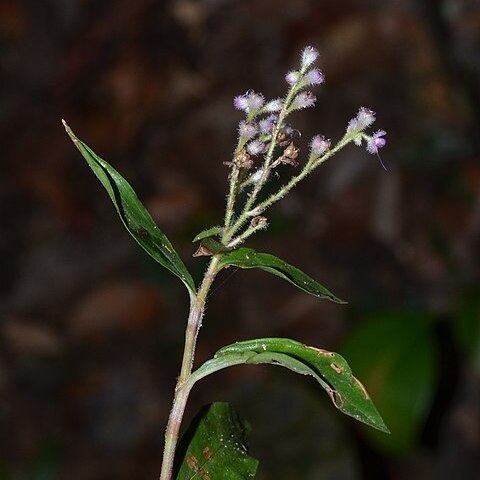A creeping leafy herb, like wandering Jew. The stems lie on the ground and root at the nodes. The tips of the branches bend upwards to 20-50 cm height. The leaves are narrow and sword shaped and 4-8 cm long. They are pointed towards the tip. The flowers are small, green and covered with hairs. They are 4-5 cm long. The petals are blue. The fruit or capsule has 2 sections. There is one seed in each section. The seeds are about 2 mm long.


